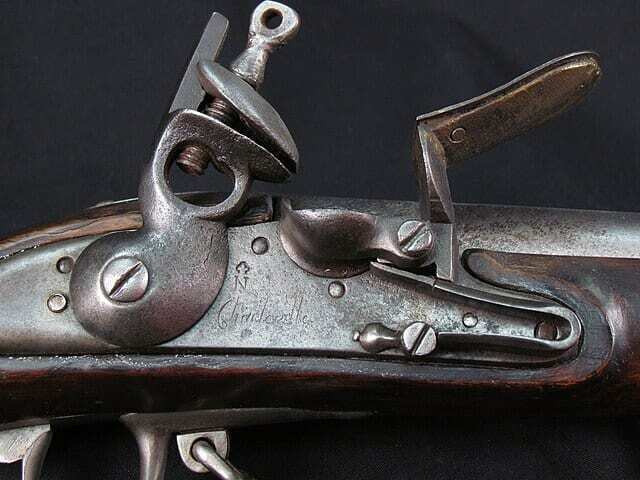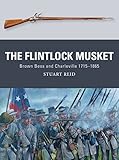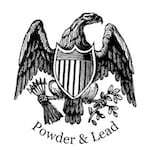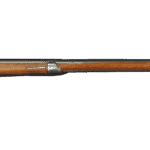
Introduction
The Charleville Musket stands as one of the most iconic military firearms of the 18th century. Named after the renowned Manufacture d'Armes de Charleville in Charleville-Mézières, France, this flintlock musket served as the primary infantry weapon of the French Army and played a pivotal role in multiple conflicts, including the American Revolutionary War and the Napoleonic Wars. It also directly influenced American firearm development, particularly with the U.S. Model 1795 Musket.
Development and Predecessors
The Charleville Musket evolved from a long tradition of French military firearm development. Prior to its standardization, French infantry primarily relied on earlier fusils, including the Model 1716, which was less uniform in its production.
The first official Charleville Musket, the Model 1717, marked the beginning of a systematic effort to standardize French military arms. It featured a .69 caliber bore (17.5mm), a flintlock ignition system, and a smoothbore barrel measuring approximately 44 inches. This model was succeeded by the Model 1728, which introduced several enhancements, including a stronger lock mechanism and a steel ramrod in place of earlier wooden versions.
Subsequent iterations, including the Model 1746, Model 1754, and ultimately the Model 1763 and Model 1766, refined the design. The 1766 version, in particular, became the most prolific, offering a lighter build with a streamlined stock and reinforced barrel bands. These improvements enhanced durability, accuracy, and ease of use in battlefield conditions.
Key Innovations and Manufacturing
Contrary to some misconceptions, the Charleville Musket was not one of the first firearms designed with fully interchangeable parts. While greater standardization was achieved—especially with the Model 1763 and later the Model 1777—true interchangeability did not come until the 19th century with Honoré Blanc’s work and later U.S. military advancements.
Production was centered in Charleville, but additional manufacturing took place at Maubeuge, Saint-Étienne, and Tulle, ensuring a consistent supply to French forces. During peak production in the mid-18th century, these armories collectively produced an estimated 30,000 to 50,000 muskets annually, a testament to the efficiency of French arms production.
Combat Use and Historical Significance
The Charleville Musket saw extensive service in the War of Austrian Succession (1740-1748), the Seven Years' War (1756-1763), the American Revolutionary War (1775-1783), and the Napoleonic Wars (1803-1815).
The American Revolutionary War
One of the Charleville Musket’s most famous deployments was in the American Revolutionary War. France, under King Louis XVI, supplied thousands of these muskets to the Continental Army, particularly after the Treaty of Amity and Commerce (1778) formalized France’s alliance with the American rebels. These weapons were widely issued, influencing U.S. military firearm design.
General George Washington's forces, previously dependent on captured British Brown Bess muskets, quickly adopted the Charleville. Marquis de Lafayette played a crucial role in securing these arms for American troops. The Charleville’s durability and ease of use made it a preferred weapon, directly inspiring the Springfield Model 1795, the first official musket manufactured by the United States.
The Napoleonic Wars

By the time of the Napoleonic Wars (1803-1815), the Charleville Musket had evolved into the Model 1777, which incorporated further refinements, including an improved lock plate and reinforced stock. French infantry doctrine, emphasizing volley fire and bayonet charges, relied heavily on the Charleville, using it in legendary battles such as Austerlitz (1805) and Waterloo (1815).
Technical Specifications and Performance
The Charleville Musket was a .69 caliber smoothbore flintlock musket, designed for mass infantry formations and volley fire. Its specifications include:
- Barrel Length: 44 inches (112 cm)
- Overall Length: 60 inches (152 cm)
- Weight: Approximately 10 lbs (4.5 kg)
- Caliber: .69 inch (17.5 mm)
- Ignition System: Flintlock
- Muzzle Velocity: ~1,200-1,500 feet per second (depending on powder charge)
- Effective Range: 50-100 yards
While smoothbore muskets like the Charleville lacked the accuracy of rifled firearms, they were highly effective in close combat, particularly when combined with bayonet charges. The Charleville was known for its superior balance and reliability compared to the British Brown Bess.

Comparison with Contemporaneous Firearms
The Charleville Musket was often compared to the British Brown Bess (Land Pattern Musket) and the American Kentucky Rifle:
- Brown Bess (.75 caliber):
- Larger bore, heavier (10-11 lbs)
- Slightly lower muzzle velocity
- More commonly used by British and Hessian troops
- Rougher manufacturing tolerances, leading to looser ball fit
- Kentucky Rifle (.50-.54 caliber, rifled):
- Significantly greater range (200+ yards)
- Slower reload time, unsuitable for mass volley tactics
- Used primarily by American sharpshooters rather than line infantry
While the Kentucky Rifle offered superior accuracy, its slower rate of fire made it unsuitable for mass battlefield use. The Charleville and Brown Bess remained dominant due to their ability to fire three to four rounds per minute, making them more effective in large-scale engagements.
Legacy and Influence
The Charleville Musket's influence extended beyond France, shaping firearm development in the United States and Europe. Notably:
- The U.S. Model 1795 Musket, the first mass-produced American military musket, was a direct copy of the Charleville 1766.
- The French Model 1777 introduced features that influenced later flintlock designs worldwide.
- The Charleville’s production techniques contributed to the early standardization of firearm manufacturing, paving the way for industrialized weapons production in the 19th century.
Conclusion
The Charleville Musket remains a landmark in military firearms history. Its innovative design, durability, and battlefield performance made it a dominant weapon of its time, playing a crucial role in the American Revolution, the Napoleonic Wars, and beyond. While eventually replaced by percussion-cap firearms, the Charleville’s impact is undeniable, influencing American and European military doctrine and arms production for decades to come.
As a testament to its historical significance, original Charleville Muskets are now prized collectibles, featured in museums and private collections worldwide. Its legacy endures as one of the most important firearms of the 18th and early 19th centuries.
For forums on this and other muzzleloading rifles, join the discussions here.
Or read more about it here:

If you know of any forums or sites that should be referenced on this listing, please let us know here.




